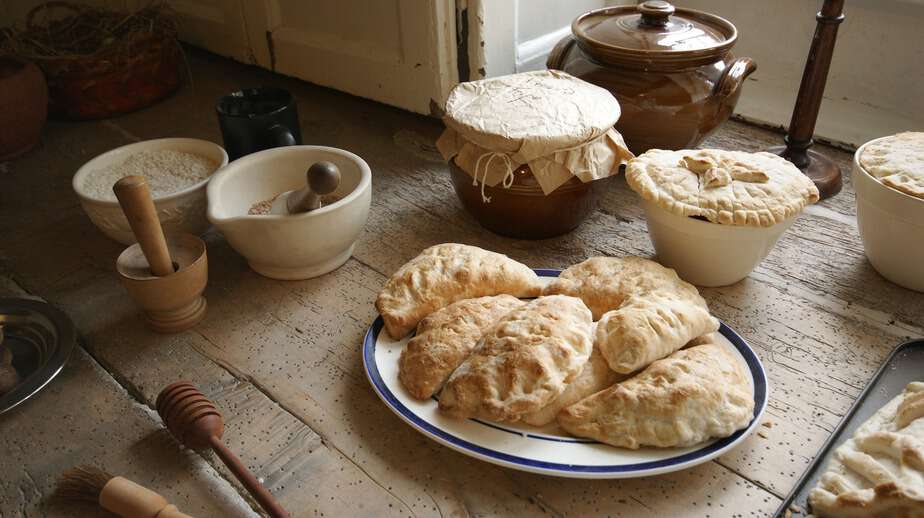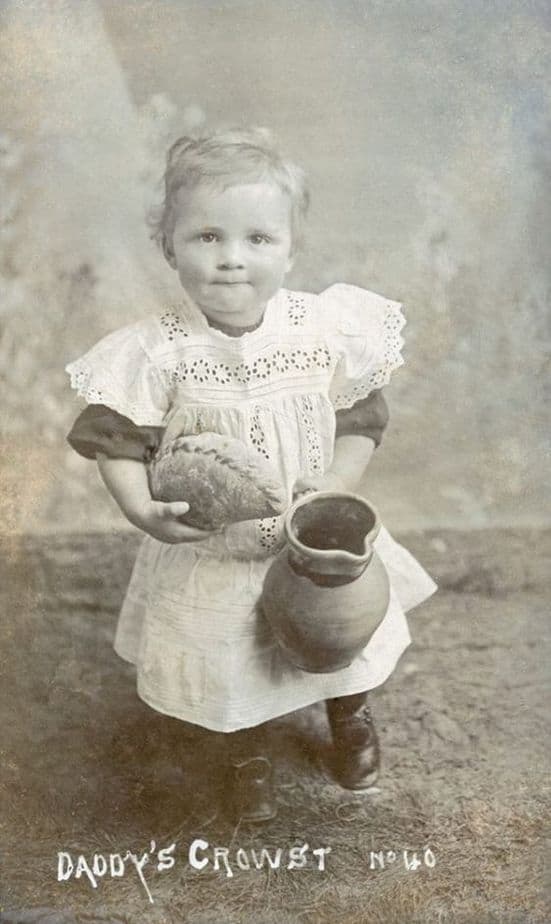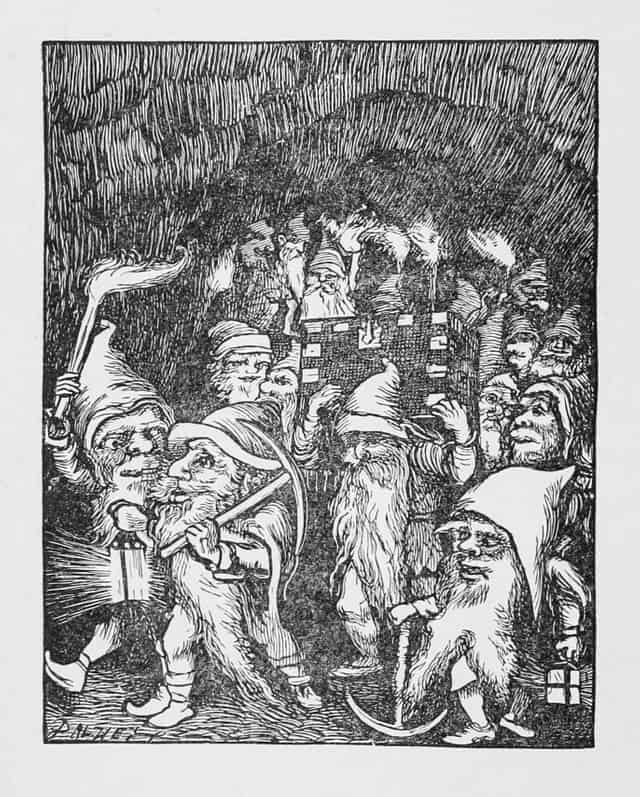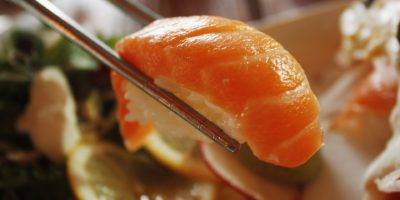All About the Cornish Pasty

Image sourced from Wikimedia Commons
Origins of the Cornish Pasty
The Cornish Pasty is a popular dish originating from Cornwall, and can be seen by many as the main culinary dish of the region. The pasty has been a popular part of the British diet for many centuries.
Historical evidence confirms the importance of the pasty as part of the county’s culinary heritage. Although no one knows exactly when pasties originated, there is a letter in existence from a baker to Henry VIII’s third wife Jane Seymour saying: ‘hope this pasty reaches you in better condition than the last one…’
The Oxford English Dictionary suggests that the Cornish pasty was identified in around 1300. The word ‘pasty’ comes from the Medieval French Paste or Pasta; a pie containing whatever ingredients you desired without the need for a dish. The pasty has been mentioned in cookbooks since its earliest reference in 1393.
The Cornish Pasty throughout history

Pasties and pies, image by Linda Biggs sourced from Pixabay
Initially eaten only by the rich upper classes and royalty, it was not until the 17th and 18th centuries that the pasty was adapted by miners and farm workers in Cornwall. It was intended as a way of providing themselves with easy, nutritious and sustaining meals while they worked in the mines, that was also inexpensive to make.
These meals were prepared by the wives of Cornish tin miners, to provide sustenance for their spouses during their gruelling days down the damp and mines. The wife would prepare one for each member of the household, and would mark their initials on one end of the pasty to distinguish his from his colleagues.
The size and shape of the pasty made it ideal for carrying, as working at such depths mean it was not possible to return to the surface for lunchtime. A typical pasty is simply a filling of choice sealed in a circle of pastry with the edge crimped into a thick crust.

Miners eating Cornish Pasties, image sourced from LivingInCornwall
A good pastry could even survive being dropped down a mine shaft. The crust served as a way of holding the pastry without dirty hands contaminating the meal. Arsenic was commonly found in the mines, so to avoid poisoning the pastry was essential.
In the 1800s, the Cornish mining industry collapsed forcing large numbers of miners and merchants to seek work abroad. Pasties accompanied these Cornish settlers abroad and are found in many parts of the world including Australia, Canada, New Zealand, USA and South Africa.

Advertisement for a Cornish Pasty, image sourced from Pinterest
Preparation of the Cornish Pasty
The traditional recipe for pastry fillings is beef with onion, potato and swede, which when cooked together form a rich gravy. Most pasties usually contained a much higher quantity of vegetables in the past than they would today, as meat was expensive and more scarce back then. The pasty must (traditionally) be made up of 12.5% beef and 25 % vegetables.

Young girl with a Cornish Pasty, image by Owen Trembath sourced from Pinterest
There is a lot of debate as to whether the ingredients should be mixed together before they are put in the pastry or lined up on the pastry in a certain order. There is agreement however that the meat should be diced or minced, and only beef should be used.
The vegetables sliced, and none should be cooked before they are sealed within the pastry. This is what makes the Cornish Pastry unique from other foods.
Call for Cornish Pasties: “Oggie, Oggie, Oggie”

Bal Maidens at Dolcoath, 1890, image sourced from Wikimedia Commons
As it was such a common method to eat amongst the miners, some mines even had stoves down the shafts specifically to cook the raw pastries. This is how the well known British rhyme “Oggie, Oggie, Oggie” originated. The word ‘Oggie’ comes from the word ‘Hoggan’, Cornish for pasty and was shouted down the mine shaft by the Bal maidens, who were the female manual labourers working in the mines in Cornwall.
The Bal maidens were responsible for cooking the pastries, and they would shout this when they were ready for eating. In response the miners would shout back in unison “Oi, Oi, Oi!” If they were cooked in the mornings however, the pastries could keep the fillings warm for 8-10 hours and keep the miners warm when held close to the body.
It was also common for the pasties to not only be eaten as a main course at lunch, but also as a sweet or fruity desert course. The savoury filling would be cooked at one end of the crescent and the dessert course at the other end.
Traditions of the Cornish Pasty
There is a lot of tradition connected to the Cornish Pasty. As the pasty is such a celebrated emblem for Cornwall, when the Cornish rugby team play a significant match a giant pasty is suspended above the bar before the match begins. In 1985 one Cornish Young Farmer’s Group decided to celebrate the symbol by creating the largest on record at 32 feet.
Beliefs & Superstitions of the Cornish Pasty
As is the case with many British cultural symbols, there are many superstitions and beliefs surrounding the Pasty that have been passed on and accepted as ritual.
It was noted that the Devil would never cross the River Tamar into Cornwall for fear of becoming a filling in Cornish pasty after overhearing of a woman’s inclination to turn anything into a tasty filling.
Another superstition was that the reason the wife marks the pasty with his husband’s initials on the crust is so that he can leave some crust and pasty to the ‘Knockers’. The Knockers were mischievous little people that lived in the mines and were believed to cause chaos and havoc unless they were given small amounts of food. It is believed the initials carved into the pasty crusts made those who left their crusts for the knockers could determined from those that didn’t.

Depiction of goblins (Knockers) by artist Arthur Hughes (1832-1915), image sourced from Steemit
As pasties were a common diet in the 13th century for the rich, they were often filled with other ingredients including seafood. However, this would have been unthinkable in Cornwall, a county dependent on the sea.
Some Cornish fishermen thought it was bad luck to even have a pasty on board their ship. This belief was thought to have originated by the Cornish tin families, who did not want their pasty creation adopted by the fishing trade.
Planning a trip to Paris ? Get ready !
These are Amazon’s best-selling travel products that you may need for coming to Paris.
Bookstore
- The best travel book : Rick Steves – Paris 2023 – Learn more here
- Fodor’s Paris 2024 – Learn more here
Travel Gear
- Venture Pal Lightweight Backpack – Learn more here
- Samsonite Winfield 2 28″ Luggage – Learn more here
- Swig Savvy’s Stainless Steel Insulated Water Bottle – Learn more here
Check Amazon’s best-seller list for the most popular travel accessories. We sometimes read this list just to find out what new travel products people are buying.









